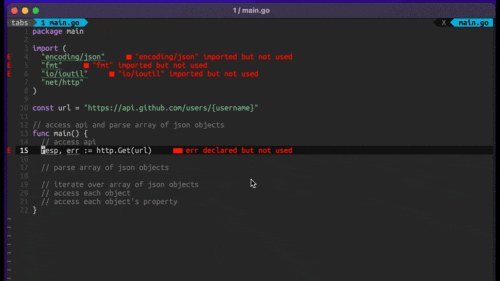
Four Key Reasons to Learn Markdown
Back-End Leveling UpWriting documentation is fun—really, really fun. I know some engineers may disagree with me, but as a technical writer, creating quality documentation that will...
Ruby and Rails gives us tools to quickly create powerful web applications. With little effort we are able to model our domain objects and build relationships between them. When it all boils down our apps aren’t really interesting without data, and it is supremely important that we ensure our data is safe, consistent and reliable. We can dramatically increase these factors by taking full advantage of the tools at hand. I want to tell you about some of these tools.
Most Ruby on Rails developers are fully aware of the features we’re given in migrations to add constraints to the database, but I’ve found that few people take full advantage of them. Let’s touch on a couple.
Consider the following contrived example:
class CreateWidgets < ActiveRecord::Migration
def change
create_table :widgets do |t|
t.boolean :cool
end
end
end
This creates a widgets table with a cool boolean attribute. Assume we have an appropriate Widget ActiveRecord model. What’s the big deal? Subtly this creates a boolean attribute that has three possible states (true, false and nil). Does that matter? You can still do stuff like this:
w = Widget.new
w.cool # => nil
w.cool? # => false, nil is falsey
It works as expected, right? What if you wanted to query for uncool widgets? Unfortunately, we can’t assume uncool widgets are widgets whose cool attribute is false. Check it out:
Widget.create # => #<Widget...>
Widget.count # => 1
Widget.where(cool: false) # => [], doh
Widget.where.not(cool: true) # => [], Rails 4 only, also WAH!?!?!?
So how do we get uncool widgets?
Widget.where('cool = ? OR cool IS NULL', false) # => [#<Widget...>]
Yeah… no. It’s really not cool (sorry) to have to bring SQL to the table (rimshot) for what should be such a simple operation. The idea is that something is either cool or it isn’t. Let’s forget null as an option and make this a boolean. It can easily be remedied by adding some constraints to the cool column:
class CreateWidgets < ActiveRecord::Migration
def change
create_table :widgets do |t|
t.boolean :cool, null: false, default: false
end
end
end
Now the database will not allow a null value for the cool column. Further, this automatically sets the value to false when missing which probably makes a lot of sense. We should mention that sometimes it is desirable to allow null values as sentinels. That’s why we’re given the option, but the decision is up to you!
It can be tricky to add these types of constraints to existing tables when there isn’t a default value. There may be columns in your database that could benefit from null constraints, but how can we be sure that adding the constraint in a migration won’t fail on existing records with null values? Try this:
# Assume widgets have a `foo` string column with no constraints
class AddNullConstraintToWidgetFoo < ActiveRecord::Migration
MISSING_VALUE_PLACEHOLDER = '<missing>'
def up
change_column_null :widgets, :foo, false, MISSING_VALUE_PLACEHOLDER
end
def down
change_column_null :widgets, :foo, true
execute "UPDATE widgets SET foo = NULL WHERE foo = #{MISSING_VALUE_PLACEHOLDER}"
end
# You always code your migration to rollback, right?
end
First, we set any existing null column to some known value. This value can be used in future queries to find records with formerly “missing” values. Now all columns will satisfy the newly added null constraint.
“WUT ABUT ACTIVEMODEL VALIDAYSHUNZ, OMG THEIR GR8!”
Agreed, I love ‘em. But they’re not for data integrity. They’re best used to provide helpful feedback to users entering data into your app.
For the longest time, I put validations on every attribute to match 1:1 with the database constraints. In general, this is redundant. The key is to validate attributes that your users will be interacting with. For example, you almost never have a user entering “mapping” records (think: join tables) manually… so don’t validate presence of those ids! The database will make sure you don’t get null values into those records. Trust the database; it’s really good at what it does.
Hopefully this provides some perspective on data integrity, and how it can improve your Rails app. We don’t have to be DBAs to do this stuff, and it really can make our lives happier. Stay tuned: in future posts I hope to tackle uniqueness, referential integrity and more.
Coding Rails with Data Integrity, Part 1 (null constraints and default values)
Coding Rails with Data Integrity, Part 2 (uniqueness constraints)
Coding Rails with Data Integrity, Part 3 (foreign key constraints)
What other ways have you come up with to ensure data integrity in your apps? We’d love to hear what you think!

Writing documentation is fun—really, really fun. I know some engineers may disagree with me, but as a technical writer, creating quality documentation that will...

Humanity has come a long way in its technological journey. We have reached the cusp of an age in which the concepts we have...

Go 1.18 has finally landed, and with it comes its own flavor of generics. In a previous post, we went over the accepted proposal and dove...